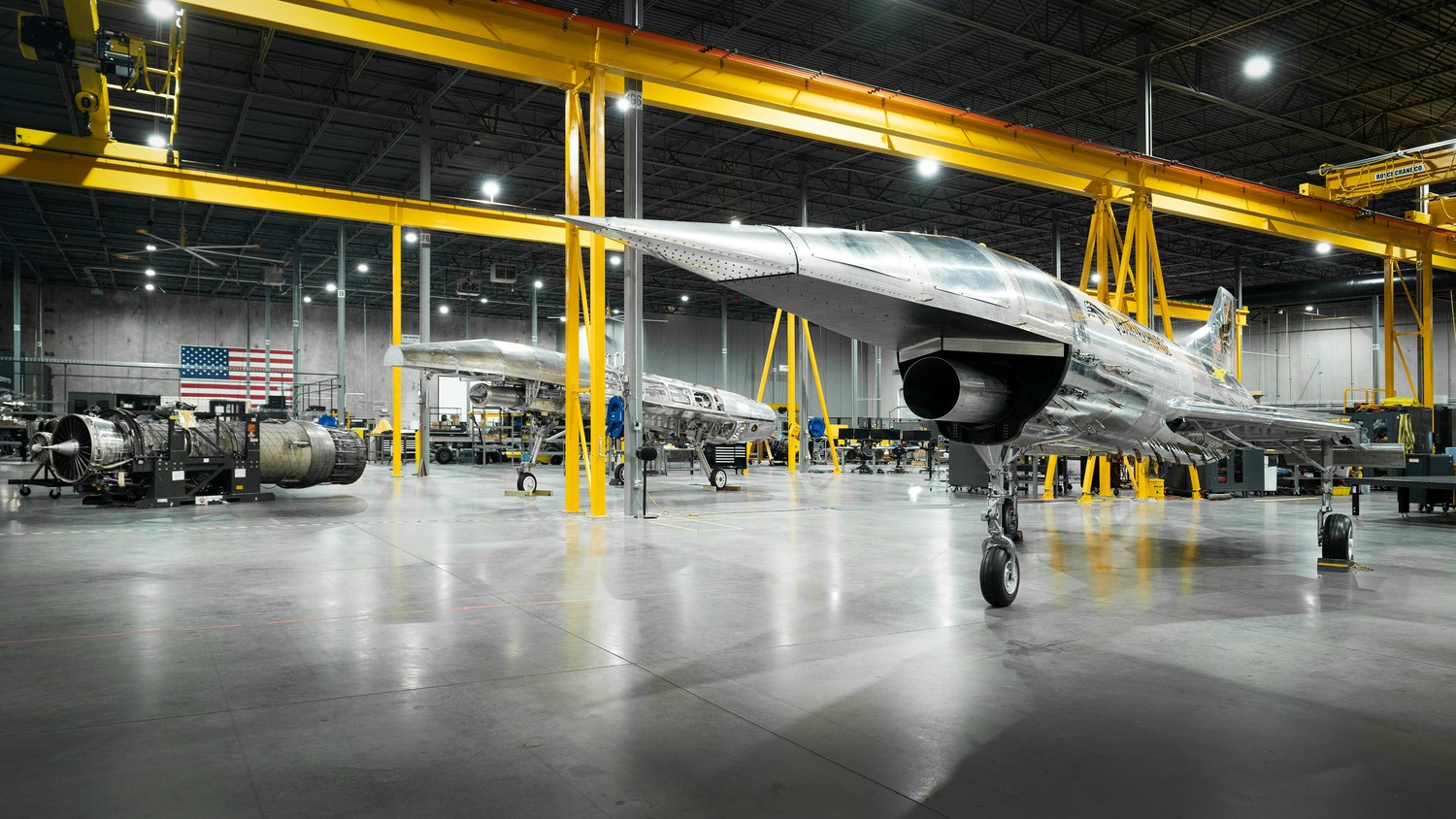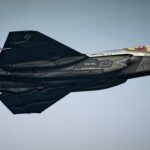Airbus Defence & Space chief executive Michael Schöllhorn told reporters in Berlin that Germany must decide within this legislative period whether it still wants a fighter-aircraft industry. He warned that without a fifth Eurofighter tranche the Manching line will fall silent after the last Quadriga jet leaves the final-assembly hall in 2030. The German Aerospace Association also warns over job losses if no bridging order is placed.
Eurofighter Typhoon Tranche 5: Industrial Survival or Sunset?
Consultancy PwC Strategy& released a 68-page study that measures the ripple effect of the Typhoon program. The authors used input-output tables from the German Federal Statistical Office and found that every euro invested in Tranche 4 multiplies into several euros of GDP.
It found that the project:
- 100,000 European jobs depend on the aircraft, 25,000 inside Germany.
- 120 German suppliers work on structure, avionics, and propulsion.
- Each new tranche generates fresh tax receipts for federal and state budgets.
The program pays social-security and pension contributions that top €800 million per year.
The numbers look solid, yet a gap looms. Eurofighter deliveries to the Luftwaffe cease in 2030 while the Franco-German-Spanish FCAS enters service, at best, a decade later. Without bridging orders, highly-skilled workers would scatter, and tooling would rust in storage.
Strategic Need and Industrial Risk Behind Tranche 5 Push
Schöllhorn, who also chairs BDLI, set a red line: “We need the mandate for further development during this parliament.” His team wants a two-step program that funds the Long-Term Evolution (LTE) upgrade and commits to at least 60 German Tranche 5 aircraft. The LTE package involves a new mission computer, ECR-SE escort-jamming kit, conformal tanks, and networked weapons.
Union IG Metall echoed the plea. It staged a week-long series of rallies that drew 3,000 workers to Manching. Works-council chair Thomas Pretzl argued that letting the line idle would jeopardize FCAS because the same engineers design both projects.
Budget Tensions, Fleet Mix, and Export Challenges
The price tag rattles the finance ministry. Quadriga’s 38 fighters cost €5.4 billion in 2020 – roughly €142 million each. Indexing that figure for inflation and higher capability puts a 100-jet Tranche 5 lot north of €15 billion. In Berlin’s debt-brake climate, the Bundeswehr already relies on a €100 billion Sondervermögen to patch worn kit.
Fleet arithmetic raises more questions. By 2040 Germany would own:
- 110 upgraded Tranche 2/3 Typhoons,
- 38 Quadriga jets,
- 35 F-35As for NATO nuclear sharing, and the proposed 100 Tranche 5s.
That totals 283 combat aircraft before FCAS even arrives. Either the Luftwaffe retires still-young Typhoons early or keeps both generations side by side. Both options carry long-term bills that dwarf the up-front purchase.
Export hopes look shaky. Airbus forecasts that 40 of the 100 Tranche 5 jets would go abroad, yet Berlin has a history of blocking arms deals on human-rights grounds. Its October 2018 freeze on Typhoons for Saudi Arabia remains a cautionary tale, even though London and Riyadh closed the political gaps.
Eurojet EJ200 and Wingman Drone: Tech Timeline at Risk
Engine builder MTU says time is short. Chief program officer Michael Schreyögg told Aviation Week that the Eurojet EJ200 must evolve now to rehearse technologies for the next-generation fighter. A lost decade would cripple turbine design bureaus that already face demographic attrition. The Italian Air Force has already ordered 54 EJ200 powerplants to support upcoming Eurofighter batches.
Defense economists inside the Bundestag budget committee proposed a phased approach. Phase One would release €1.2 billion for LTE studies, radar prototypes, and tooling retention. Phase Two, penciled for 2025, would place the main production order once costed work-share tables land on lawmakers’ desks.
Chancellor Olaf Scholz has not signaled clear support. His coalition partners split: the Free Democrats like the jobs argument, the Greens question any expansion of combat-aircraft fleets, and the Social Democrats fear choosing Typhoon over social spending. The defense ministry therefore drafts two budget books – one with Tranche 5, one without.
Meanwhile, Airbus markets LTE abroad. Spain’s Halcón program, Qatar’s follow-on tranche, and a possible continuation order from Kuwait could supply enough volume to keep the pan-European line humming – if Berlin approves export licenses. The pan-European supply chain hinges on that answer.
Developers also pitch a collaborative unmanned wingman that plugs into Typhoon’s datalink. The lightweight drone would carry additional missiles or decoys, allowing the manned jet to stand off. Engineers say the wingman study cannot mature without immediate funding, because aerodynamic testing must dovetail with LTE software cycles.
Economic Fallout of Delay: Workforce, Exports, and Deterrence
Financial planners point to a hidden cost: workforce churn. PwC found that a four-year production pause would push 45 percent of specialized staff into early retirement or new sectors. Re-hiring and re-qualifying them for FCAS later would cost more than €3 billion. That figure excludes opportunity costs from delayed exports.
Politically, a new Typhoon order would soothe NATO allies that fear Europe’s industrial drift toward the United States. The F-35 decision already tilted procurement east of the Atlantic. A robust Typhoon line signals that Europe still fields sovereign fast-jet design teams.
Yet Berlin has not decided how many munitions its fighters will carry. Luftwaffe officers want to pair Tranche 5 with SPEAR-3 and the Norwegian-German JSM. Treasury officials push cheaper stockpiles of existing GBU-48 bombs. Weapon-integration budgets therefore remain stuck in draft form.
BDLI president Schöllhorn wrapped the briefing with a blunt message: “Either we place the order – and protect skills, exports, and deterrence – or we watch design offices close.” He asked parliament to answer before the summer recess of 2025 so suppliers can lock material quotes.
Eurofighter News – March 2025 Update: Pre-Order Offers Momentum, But Decision Still Pending
Nearly eighteen months on, pressure has produced movement but not closure. Chancellor Scholz used the opening of ILA Berlin 2024 to announce a pre-order for 20 additional Typhoons. He framed it as an “industrial bridge” that stretches final assembly through 2032. Airbus welcomed the pledge, yet the company still regards it as an appetizer, not the main course.
The bridge looks firmer now that Berlin has lifted its embargo on Saudi exports. Foreign Minister Baerbock confirmed the shift in January 2024, citing new Middle-East alignments after the Gaza war. BAE Systems immediately reopened talks for Riyadh’s long-blocked follow-on buy. If signed, German companies would supply 30 percent of each jet, injecting fresh workload into Bavarian plants.
Madrid added momentum. On 20 December 2024 Spain inked Halcón II, a €6.5 billion order for 25 digitally-enhanced Typhoons. The deal secures the Getafe line and funds common LTE items such as the ECR-SE suite. Spanish officials argue that joint development with Germany will cut unit prices for both air forces.
Bundestag Budget Steps Forward – But How Large Will Tranche 5 Be?
Inside the Bundestag, the budget committee last week released €700 million in long-lead funds for German Tranche 5 tooling, avionics test rigs, and EJ200 growth-core parts. Committee chair Sebastian Schellhorn (FDP) called it “earnest money that warns suppliers not to mothball their shops.” The full production vote remains scheduled for the autumn sitting.
Opposition critics note that the defense ministry has still not published a life-cycle-cost table that covers fuel, training, mid-life upgrades, and disposal. Green party spokesperson Sonja Meyer warns that open-ended obligations could crowd out cyber-defense spending in the next fiscal plan. The debate has therefore shifted from whether to order Tranche 5 to how large the batch should be.
LTE Bench Testing and Export Interest Support Larger Buy
At the operational level, LTE flight-software blocks 0.3 and 0.4 entered bench testing in February 2025. Engineers confirm that the new integrated core supports both the Spanish-German ECR-SE pod and the future unmanned wingman link. Program chiefs say a freezing decision on final software content must come by December 2025 to keep first deliveries in 2031.
Export interest has widened. The Netherlands sent a price-and-availability request in January, eyeing Typhoon as a hedge against F-35 delivery delays. Indonesia reopened talks for a mixed Rafale-Typhoon fleet that would split work between Dassault and the Airbus line at Manching. Each inquiry strengthens the business case for a bigger German batch because it spreads non-recurring costs.
Consortium Break-Even Hinges on German Decision
Despite those positives, the clock keeps ticking. PwC now estimates that 35 percent of Tranche 5 suppliers will reach break-even volume only if Germany buys at least 60 aircraft. Anything less means higher unit prices and awkward renegotiations of work-share rules inside the consortium. The decisive vote therefore still lies ahead, exactly where Schöllhorn placed it – in the Bundestag calendar for late 2025.
REFERENCE SOURCES
- https://theaviationist.com/2025/06/23/eurofighter-mid-life-upgrade/
- https://www.flightglobal.com/defence/german-aerospace-association-warns-over-job-losses-without-eurofighter-bridge-to-fcas/155370.article
- https://www.bdli.de/sites/default/files/2024-04/240207_Study_Eurofighter_EN_digital.pdf
- https://militaeraktuell.at/en/german-industry-demands-eurofighter-order/
- https://damise.com/en/news/airbus-ceo-calls-for-urgent-decision-on-eurofighter-tranche-5
- https://aviationweek.com/defense-space/aircraft-propulsion/german-industry-calls-berlin-invest-eurofighter-development
- https://breakingdefense.com/2024/06/germanys-scholz-says-20-more-eurofighters-to-be-ordered/
- https://theaviationist.com/2024/06/05/germany-will-purchase-20-new-eurofighter-tranche-5-jets/
- https://breakingdefense.com/2024/01/germany-lifts-block-on-eurofighter-typhoon-sale-to-saudi-arabia-reports/
- https://www.airbus.com/en/newsroom/press-releases/2024-12-spain-orders-25-additional-eurofighter-aircraft
- https://www.airbus.com/en/newsroom/stories/2024-03-eurofighternextgen-taking-the-eurofighter-to-the-next-level



